Blog Article / 27 February 2021
World War 2 Sites in Warsaw you must visit
The capital of Poland suffered huge losses during World War 2. Nearly 85 percent of the city was destroyed. Nowadays, numerous places of memorial, museums, and monuments remind us of those times and commemorate the heroes who sacrificed their lives for their nation's freedom. Many traces of the war can still be seen all over the capital. Discover the most important World War 2 memorials in Warsaw!

Photo Source: Warsaw Tourism Organization
Police District
Photo Source: wikipedia.org
In the first weeks of the occupation, Szucha Avenue located in Srodmiescie South borough became the center of the so-called police district. It had the status of Nur für Deutsche, which meant that only the German administration, members of the Nazi party, Wehrmacht soldiers, and German civilians could enter the offices located in this area. The most important offices of the German police and security services were installed in this district. The building at 25 Szucha Avenue was handed over to Gestapo. Other buildings were housing, among others, the Police Headquarters (Orpo), the Gendarmerie, a police station, a German medical clinic and a casino. At the beginning of 1940 the police district was closed to the Poles, and in 1943 completely fenced off from the rest of the city with barriers, the so-called Spanish goats. In 1941, Szucha was renamed for Strasse der Polizei (Police Street).
Nowadays, the former Gestapo Headquarters at 25 Szucha Avenue houses the Ministry of Education and Science, as well as the museum dedicated to the prisoners of this building (the Mausoleum of Struggle and Martyrdom).
Gestapo Headquarters - Mausoleum of Struggle and Martyrdom


Photo Source: wikipedia.org
On October 1, 1939, the building at 25 Szucha Avenue was taken over by the 4th Operational Group of the Security Police. At the end of October, the group was transformed into the Office of the Commandant of the Security Police and Security Service of the Warsaw District, commonly known as the Gestapo. The ground floor and the basement were rebuilt into the so-called house arrest ("Hausgefängnis"). At the beginning of 1940, the Germans barred its windows and corridors. The Hausgefängnis included four collective cells with no windows, commonly known as "trams". The name was derived from chairs arranged in two rows along the walls - just like in a tram. There were also ten isolation cells and a room for the Gestapo officer on duty.
Up to 100 detainees were interrogated daily at the Headquarters. They were brought from the Pawiak and other prisons in Warsaw or directly after being arrested by the Gestapo during actions against the Polish Underground or in street roundups. The detainees waited for interrogation in one of the cells in the Hausgefängnis. The interrogation took place in the offices on the upper floors or sometimes in the room of the Gestapo officer on duty next to the cells in the basement. The brutal interrogations were almost always associated with beatings and torture and often resulted in death or disability. There are countless inscriptions of the prisoners preserved on the walls and floors of the cells: prayers, thoughts on death, words about Poland, requests to notify the family, as well as crosses and calendars. All this is a testament to the courage and patriotism of the Poles detained here, many of whom were martyred during the interrogations.
Nowadays, the ground floor of the former Gestapo Headquarters houses the Mausoleum of Struggle and Martyrdom (Mauzoleum Walki i Męczeństwa). In the museum you can see, among others, the original cells and corridors, as well as a recreated room of the Gestapo officer.
Pawiak prison
Photo Source: muzeum-niepodległości.pl, wikipedia.org
Pawiak prison at Dzielna street was the largest political prison in occupied Poland. The first prisoners were detained by the Germans on October 2nd, 1939. These arrests were carried out as part of the repressive campaign against the Polish intelligentsia. In March 1940, Pawiak became an investigative prison of the Gestapo. On May 2nd, 1940, the first transport of the prisoners to the concentration camp (Sachsenhausen) took place. From that day, about 60 thousand prisoners were transported to concentration camps, most of them to Auschwitz-Birkenau, as well as to Ravensbrück, Groß-Rosen, Majdanek, Stutthof, Treblinka, and Buchenwald. In the fall of 1940, the Germans displaced the inhabitants of several nearby tenement houses at Dzielna street. Soon afterwards, the prison became part of the Warsaw ghetto. After the suppression of the ghetto uprising in May 1943, prisoners were shot in the ruins of the former ghetto - on the streets neighboring to Pawiak - Dzielna, Gęsia, Zamenhoffa, and Nowolipki. These massive executions in the Pawiak prison shocked Warsaw. On the walls of houses, notice boards, and sidewalks, the words "We will avenge Pawiak" appeared. Public executions took place in the streets of the city to scare the inhabitants of the capital. At that time, a lot of people caught in street roundups and manhunts were brought to Pawiak. From October 16th 1943, to February 15th 1944, the prisoners were executed every day, or even several times a day. Their names were published on notice boards or announced through street megaphones ("barkers").
The Polish Underground organized a wide net of conspiracy at Pawiak. Functional prisoners - doctors and the prisoners who worked in administration, sanitary column, and the workshops wrote secret messages which were handed over to the Polish prison officers, doctors from the city, and employees of the Patronage. The result of this conspiracy activity was numerous armed operations of releasing the prisoners transported from the Gestapo headquarters at Szucha Avenue to Pawiak, for example, the famous Operation Arsenal, when the Grey Ranks organisation freed Jan Bytnar "Rudy". Also, as a result of the cooperation of the prison cell with the Home Army, many death sentences were issued to the Gestapo and executioners from Pawiak and Szucha Avenue.
Pawiak could hold about 3000 prisoners at a time, including 2200 in the men's ward and 800 in the women's ward (Serbia). It is estimated that more than one-third of Pawiak prisoners died in executions, were murdered during interrogations in the Gestapo Headquarters or cells, or died in the prison hospital. The regular executions of the prisoners took place, among others, in Palmiry, Laski, Kabacki Forest, Chojnowskie Forest, Magdalenka, Bukowiec near Jabłonna and Wiejska street in Warsaw.
In view of the approaching front, in July 1944, the Germans began to liquidate the prison. During the Warsaw Uprising, the last executions of Pawiak prisoners took place in the ruins of the ghetto. On August 20th, the German prison staff was evacuated, and on August 21, 1944, the Pawiak and the buildings adjacent to the prison were blown up.
Today, you can visit the Museum of Pawiak (Muzeum Więzienia Pawiak), which was built on the surviving foundations of the prison.
Warsaw Ghetto
.jpg)
Photo Sources: polskieradio.pl, AB Poland Travel collection
The closure of the ghetto in Warsaw took place on November 16th, 1940. On that day, almost 30 percent of Warsaw’s population was crowded into 2,4 percent of the city's area enclosed with a brick wall. The ghetto covered the area located in today's Srodmiescie North and Wola and it was limited by streets: Wielka, Bagno, Grzybowski Square, Rynkowa, Zimna, Elektoralna, Bankowy Square, Tłomackie, Przejazd, Krasinski Garden, Nowolipki, Świętojerska, Freta, Sapieżyńska, Konwiktorska, Stawki, Okopowa, Zegarmistrzowska, Żelazna, Wronia, Waliców and Sienna. The ghetto included places important for the Jews, such as Jewish Cemetery, Grzybowski Square, and the synagogues, for example, Nozyk Synagogue, Moriah Synagogue, and the Great Synagogue.
Most important sights in the former Warsaw Ghetto that you can visit today:
Prozna Street - the only street of the Warsaw ghetto, whose buildings on both sides of the road survived the war (numbers 7, 9, 12, and 14).
Photo Sources: AB Poland Travel collection
Grzybowski Square and Twarda street - the lively heart of the Jewish Quartier since the beginning of the 19th century. After the war, it was the center of the revival of the Jewish community and identity. Today, the area around Grzybowski Square and Twarda Street is the heart of various Jewish social, cultural, and educational institutions, for example, the Jewish Community of Warsaw.

Photo Sources: Warsawmum.pl, Warsaw Tourism Organization
Nozyk Synagogue - the only synagogue in Warsaw which survived the war and is still in use today.


Photo Sources: wikiwand.com, warszawa.jewish.org.pl
Remains of the Ghetto wall at Sienna 55 street, Zlota 62 street, and Walicow 11 street


Photo Sources: wio.waw.pl, AB Poland Travel collection
Tenement House at 14 Walicow street where a Jewish poet Władysław Szlengel lived during the occupation

Photo Source: Warsaw Tourism Organization
The Bridge of Sighs at Chlodna-Żelazna junction - In December 1941, the section of Chłodna Street between Wronia and Żelazna streets was excluded from the ghetto. It became an important exit road to "Aryan" Warsaw, which divided the ghetto into two parts. The only connection between the two parts of the closed district was the narrow passage at the crossing of Żelazna and Chłodna streets. In January 1942 a wooden bridge, later called "The Bridge of Sighs", was erected between the Chłodna 23 and 26 tenement houses to improve communication between the two parts of the ghetto. It reached the level of the second floor, thanks to which "Aryan" trams and cars could pass under it down Chłodna Street. From the bridge, the pedestrians could see the panorama of the Aryan part of Warsaw. North of Chlodna street there was a "big ghetto" with a predominance of the poorest people. This is where the poor and displaced people, small traders, and craftsmen crowded around. To the south, there was a small ghetto inhabited by wealthier people, a kind of the ghetto elite - intellectuals, artists, and rich townspeople. This is also where Judenrat was located, as well as Sienna Street, which was considered to be one of the best streets in the ghetto. After the mass deportation of Jews to the Treblinka death camp, the small ghetto became incorporated into the "Aryan" part of the city. The Bridge of Sighs was no longer needed and was pulled down in August 1942.

Photo sources: dzieje.pl, Warsaw Tourism Organization
Memorial Route of Jewish Martyrdom and Struggle in Warsaw - In 1989, a memorial route commemorating Jews from the Warsaw ghetto was established in today's Muranow district. The route begins at the Ghetto Heroes Monument, then leads along Zamenhofa and Dubois Streets to Anielewicza Mound, and ends at Stawki street by the Umschlagplatz Memorial. It is designated by 22 blocks of black stone with important dates, events, as well as the names of the courageous Jews fighting in the Warsaw Ghetto Uprising or other merited Jews from Warsaw who lost their lives during the Holocaust, for example, Mordechaj Anielewicz and Janusz Korczak.


Photo source: wikipedia.org
Janusz Korczak (Henryk Goldszmit) Orphanage - after the creation of the ghetto in Warsaw, Janusz Korczak - the director of the orphanage had to move it from Krochmalna street to 33 Chlodna street. Then, in the fall of 1941, The Orphans' Home was moved once again to 16 Sienna street. On August 5, 1942, Janusz Korczak with the children was chased from the building at Sienna street to Umschlagplatz, from where they were taken to the Nazi extermination camp in Treblinka and killed there. The building at 16 Sienna street survived the war but was demolished in the early 1950s during the construction of the Palace of Culture and Science. This place is now home to the Lalka Theater. In 2012, a monument of Korczak and the orphans was unveiled at the entrance to the theater.


Photo source: wikipedia.org
Umschlagplatz - a square from which mass transportations to the Treblinka extermination camp took place in 1942 – over 300 000 people were deported.


Photo sources: jhi.pl, AB Poland Travel collection
The Ghetto Heroes Monument (Pomnik Bohaterów Getta) - On April 19, 1943, the Warsaw ghetto uprising broke out after German forces intended to begin the operation to liquidate the Warsaw ghetto and deport its surviving inhabitants to the Treblinka death camp. The revolt was crushed by the Germans four weeks later, on May 16th. The monument is located near the site of the first fights of the uprising.

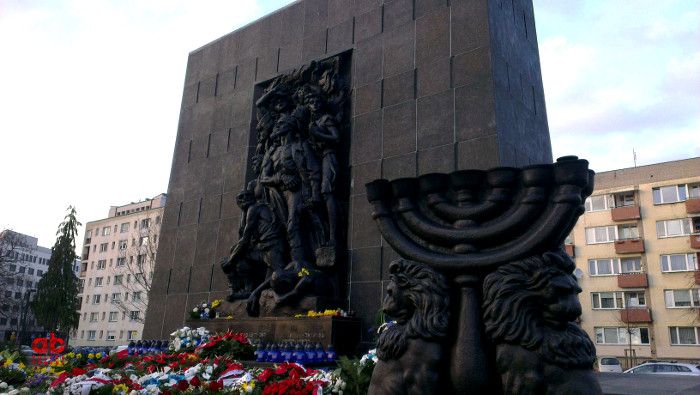
Photo source: AB Poland Travel collection
Museum of the History of Polish Jews (POLIN) - the exhibition comprises of eight parts presenting successive stages of Jewish history: from the legends about their arrival to Poland 1000 years ago, through the Industrial Revolution, to the period of the Holocaust and the present day. Inside, you will read stories, see tons of photographs, letters, and personal belongings from different periods, as well as maps and replicas of the buildings. You can even take a walk down a reconstructed street of the Jewish Quartier and enter a pre-war cinema or a cafe!
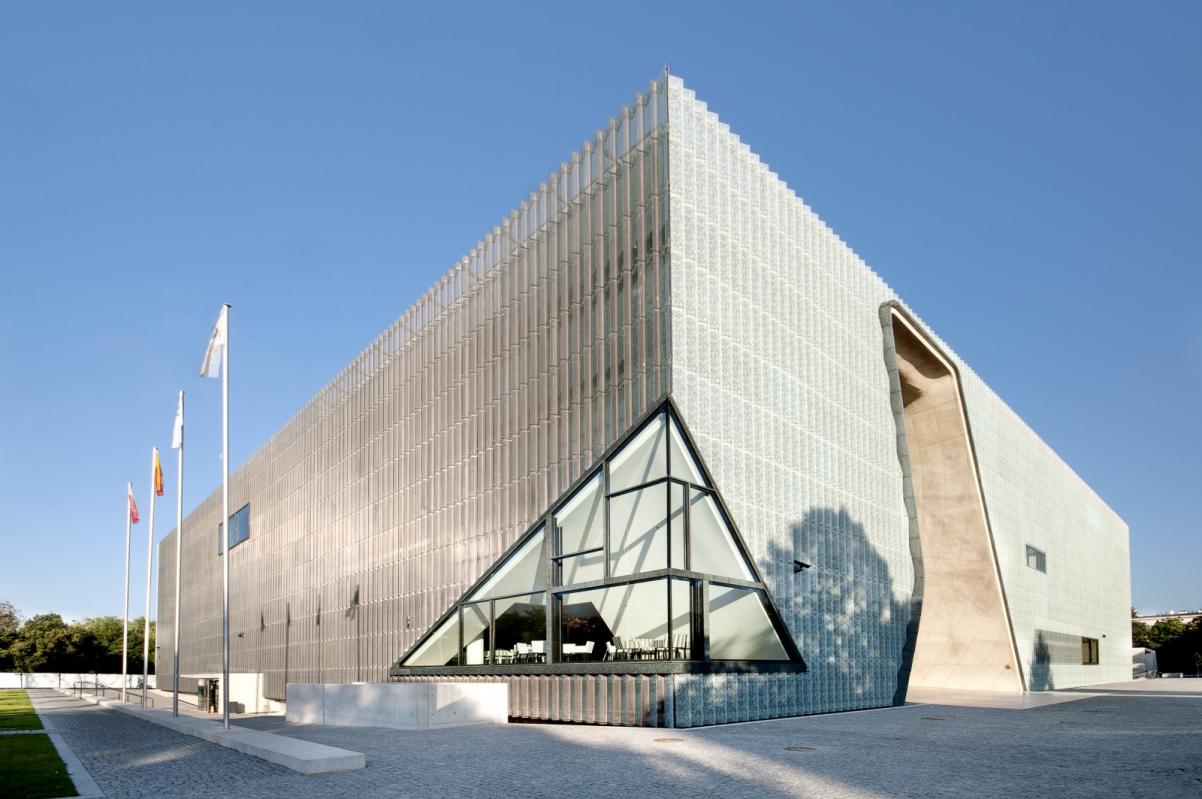

Photo source: Warsaw Tourism Organization
Jewish Cemetery in Okopowa street - one of the few open Jewish cemeteries in Poland. Here, you can see memorials of such figures as famous rabbi Szlomo Lipszyc, Jewish writer Icchak Lejb Perec, actress Ester Rachel Kaminska or the creator of Esperanto language Ludwik Zamenhof.
Photo source: AB Poland Travel collection
Warsaw Uprising Square (Plac Powstancow Warszawy)
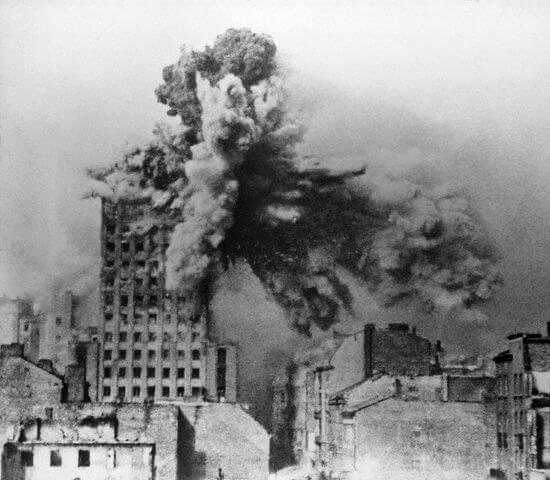

Photo source: wyborcza.pl, copperalliance.pl
Warsaw Uprising Square in the center of the Srodmiescie district is where the first shots of the Warsaw Uprising were fired on August 1, 1944. The Prudential building standing next to the square was the tallest skyscraper in Poland and one of the tallest in Europe before the war. The building was seized by the insurgents and remained in their hands until the end of the uprising. On August 28th, 1944, the Germans shelled this part of the city with heavy mortars. One of the missiles hit the structure of the building directly - it was then that one of the most famous photos from the Uprising was taken right after the explosion, showing the skyscraper shrouded in a huge cloud of black smoke. However, it did not collapse, which was interpreted as a symbol of the city's resistance. The former building of Prudential had been transformed into 5* hotel Warszawa.
The Anchor on the top of Warsaw Uprising Hill


Warsaw Old Town
The Old Town is where the toughest battles of the Warsaw Uprising took place. The most representative monument in the Old Town – the King Sigismund III Vasa Column raised in 1644 was destroyed three hundred years later during Warsaw Uprising. A missile fired by a German tank demolished the old monument on the night of September 1st, 1944. The statue of the king fell to the ground, but it was not seriously damaged. Only part of the left forearm with the cross and the saber was detached. The sculpture was transported on a sleigh to the nearby church of St. Anna. The statue was reconstructed and erected back in 1949. The ceremonial unveiling of the monument took place on the day of the inauguration of the W-Z Route.


Photo source: wikipedia.org, Warsaw Tourism Organization
Between August 21-27th, there were fights for the Cathedral Basilica of Martyrdom of St. John the Baptist which ended with the destruction of the church. The Cathedral was rebuilt in 1956. A memorial plate with one steel caterpillar was embedded in its wall. It is a remnant of the goliaths, which the Germans used to demolish the walls and barricades.


Photo source: wikipedia.org
Basilica of the Holy Cross in Krakowskie Przedmiescie Street is where two goliaths were detonated on September 6th, 1944. As a result, the characteristic statue of Christ collapsed and fell from the balustrade of the church's stair. It was taken from Warsaw by the Nazis together with the Copernicus Monument. Polish soldiers found the statues abandoned in a roadside ditch near the town of Nysa, 400 kilometres south-west of Warsaw. Both statues returned to Warsaw and on July 19th, 1945 they were unveiled.
Photo source: wikipedia.org
Kiliński Street is where one of the greatest insurgent tragedies took place. On August 13th, 1944, the insurgents took over the goliath, abandoned by the Germans. One of the insurgents, in a reflex of euphoria, started to drive it without preparation through the narrow streets. After driving into Kilińskiego street, a terrible explosion took place - as a result, at least 300 people died, including over 60 soldiers of the Home Army. The Polish Security Printing Works in the New Town functioned as a conspiracy place during occupation. In its building, the members of the Home Army produced banknotes and legalization documents for the Polish Underground. During Warsaw Uprising, it was one of the main resistance points in this part of the city. The building was seized by the insurgents on August 2nd and for 27 days defended itself against the attacks, becoming known as the PWPW Redoubt. Today the traces of the fights are visible on the fence. You can also see memorial plates commemorating the fallen insurgents.


Photo source: pwpw.pl, wikipedia.org
In the proximity to the Old Town Area several monuments are commemorating the Warsaw Uprising:
- Warsaw Uprising Monument is located on the southern side of the Krasinski Square. This spectacular monument shows the figures of the insurgents, emerging from under the collapsing blocks, symbolizing both the demolished buildings of the capital and the flames of the explosion. Near the Monument, you can see the entrance to a sewer used by the insurgents!
- Little Insurgent Monument is located on Podwale street by the brick wall encircling the Old Town. It is one of the most moving monuments in Warsaw. It commemorates the youngest participants of the uprising. Although no children of this age actually fought with a weapon in their hand, the youngest ones, most often scouts, performed very important liaison functions.
- Tomb of the Unknown Soldier, located on Pilsudski Square, is considered one of the symbols of the Warsaw Uprising, but also the symbol of all casualties suffered by the Polish army on various fronts, both during World War 1 and World War 2. The fragment of the colonnade, preserved to this day, is only a small part of the former Saxon Palace, which surrounded the entire square with its wings.


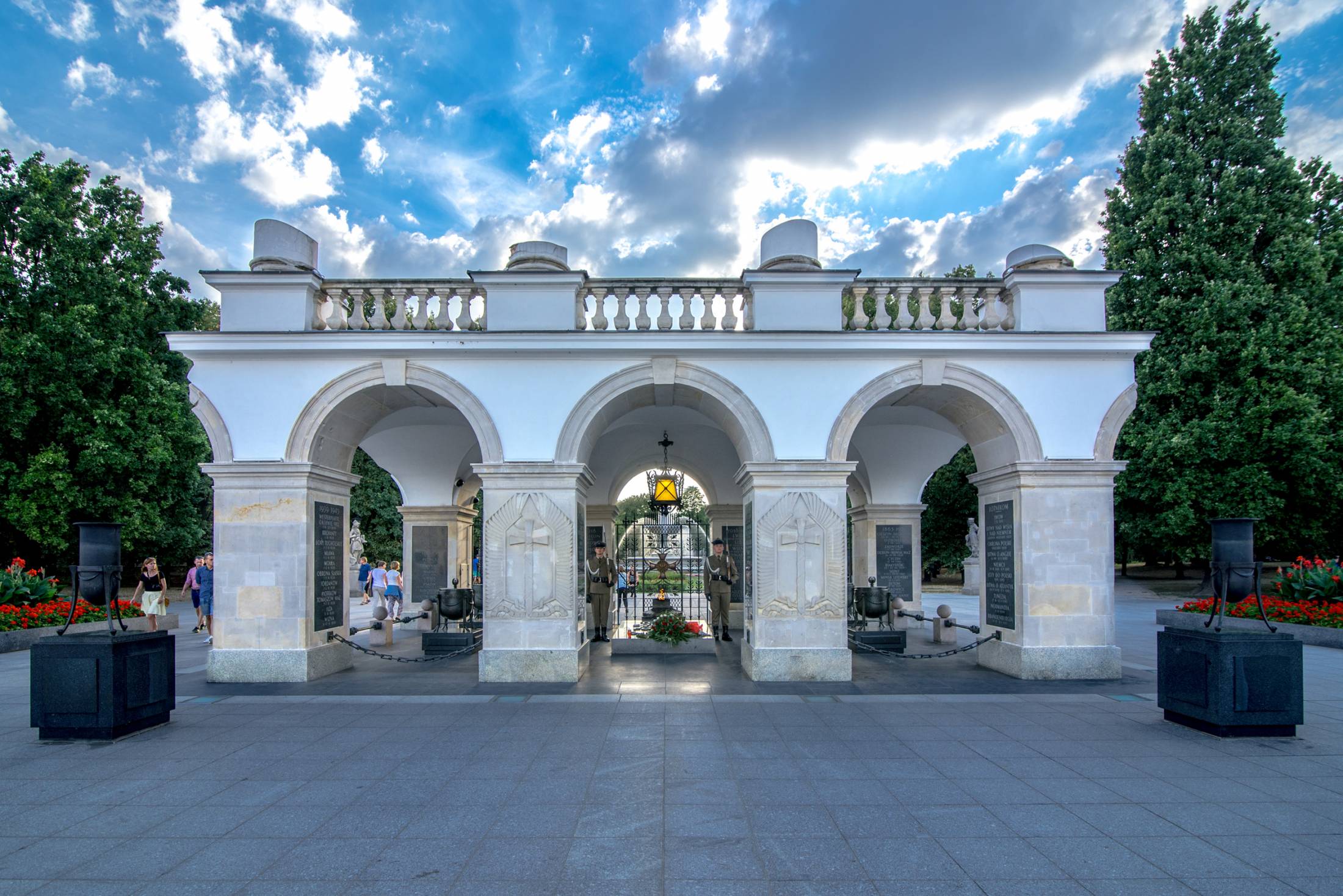
Photo source: AB Poland Travel collection, Warsaw Tourism Organization
Warsaw Rising Museum
This interactive museum commemorates the largest underground military action in German-occupied Europe during World War 2. The Warsaw Uprising of 1944, changed the face of the Polish capital forever. The multimedia exhibition reflects the atmosphere that could be felt among the insurgents. It shows the military history of 63 days of fighting and the everyday life of the civilian population, as well as describes the post-war communist terror. You can listen to the stories of the insurgents and see their personal belongings. For example, you can find out how the soldiers were moving through the sewers. You can also see what the capital of Poland looked like in March 1945 in the spine-tingling movie "City of Ruins". The exhibition also includes a faithful replica of the Liberator B-24J. Such planes were used for airdrops to help the fighting Warsaw. The heart of the building is a steel monument that connects all floors of the building. Its walls are covered with the dates of the uprising and the traces of missiles, and from inside you can hear the beating heart that symbolizes the life of Warsaw in 1944. In the Freedom Park adjacent to the Museum, you can see the Memorial Wall. Nearly 11,000 names of soldiers killed in the Uprising are engraved on it. Also, be sure to pay attention to the insurgent murals created by famous Polish artists on the "Wall of Art".
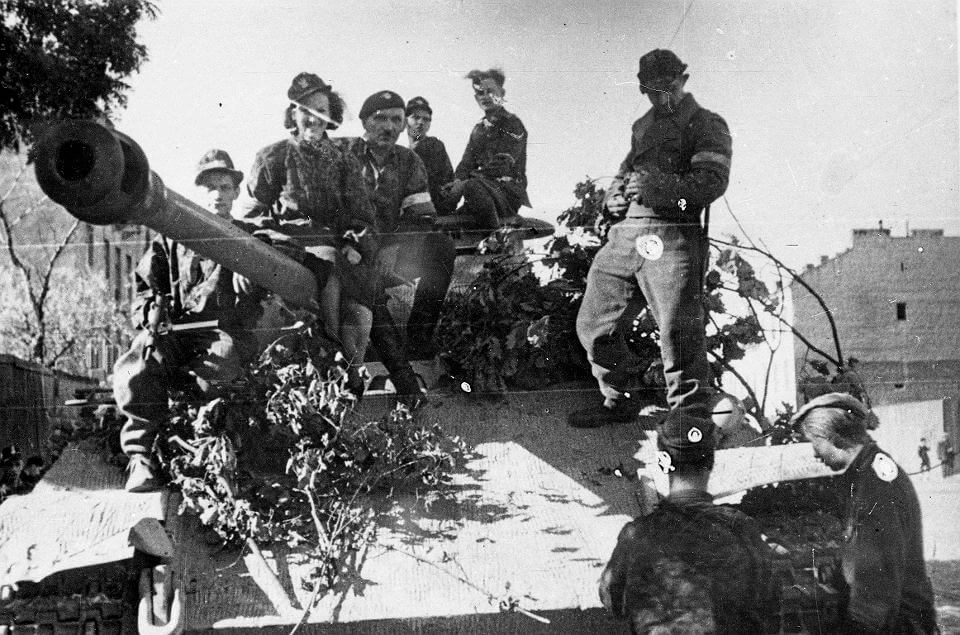

Photo sources: warszawa.wyborcza.pl, warsawtour.pl
You can visit the above-mentioned sites with a private expert guide during our World War 2 tour, Warsaw Uprising tour and Jewish heritage tour.
Author: Monika Kwiecień AB Poland Travel
Posted on: 18th February 2021
Blog
Lastest news from AB Poland Travel




